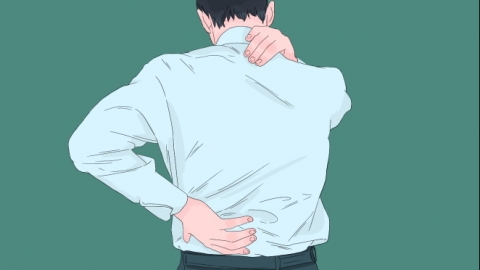How to recover from ankylosing spondylitis
Generally, worsening or recurrent symptoms of ankylosing spondylitis may be caused by genetic factors, prolonged poor posture, active joint inflammation, enthesitis, or a tendency toward spinal joint fusion. It is recommended to seek timely medical consultation to identify the underlying cause, and then improve the condition under a doctor's guidance through general treatment, medication, surgery, and other methods. A detailed analysis is as follows:

1. Genetic Factors: Carrying the HLA-B27 gene increases the likelihood of developing the disease, and genetic susceptibility may lead to recurring symptoms. In daily life, maintaining a regular routine, avoiding excessive fatigue, and engaging in moderate exercise to improve physical fitness can help reduce the frequency of acute flare-ups.
2. Prolonged Poor Posture: Poor postures such as prolonged bending or sitting can increase the burden on the spine, leading to increased pain and stiffness. It is important to maintain an upright posture while standing or sitting, adjust posture every 30 minutes during work or study, and choose a firm mattress before bedtime to reduce spinal pressure.
3. Active Joint Inflammation: Inflammation in the spine and peripheral joints manifests as pain, swelling, and limited mobility. Patients should follow medical advice to use medications such as celecoxib capsules, diclofenac sodium sustained-release tablets, and etoricoxib tablets to relieve inflammation and pain.
4. Enthesitis: Inflammation at the sites where tendons attach to bones causes localized pain and tenderness, commonly found in areas such as the heel and ischial tuberosity. Under a doctor's guidance, patients may use medications such as sulfasalazine enteric-coated tablets, methotrexate tablets, and leflunomide tablets to control inflammation.
5. Tendency Toward Spinal Joint Fusion: Disease progression leads to narrowing and fusion of spinal joint spaces, affecting spinal mobility. If severe spinal deformity occurs, spinal corrective surgery can improve spinal alignment and restore some mobility. When the hip joint is severely damaged, total hip arthroplasty may be performed to relieve pain and restore joint mobility.
Daily routines should include consistent spinal stretching exercises, such as swimming and yoga, to maintain spinal flexibility. Dietary intake of calcium and vitamin D can strengthen bones, while avoiding smoking and alcohol consumption can reduce adverse effects on the disease. Comprehensive management can help slow disease progression.




